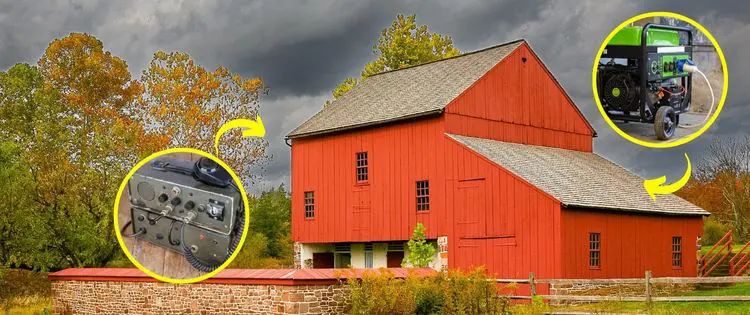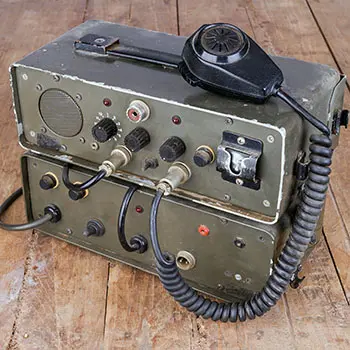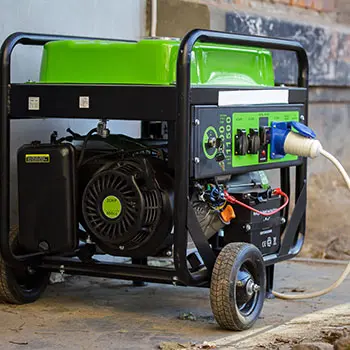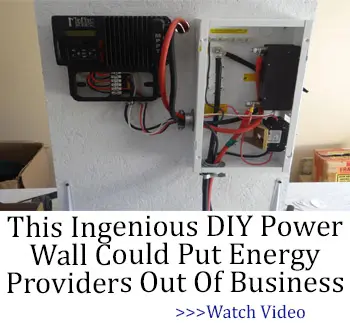When power goes out, most homesteaders reach for their backup generator. But what happens when every circuit board within a thousand miles gets fried simultaneously?
Your generator, solar system, and emergency radio become useless in an EMP event. The threat of an EMP strike looms larger than ever.
Whether from solar flares, nuclear detonation, or hostile electronic warfare, a single EMP event could instantly destroy our electrical grid and plunge us into darkness.
Ready? I bet not.
Here’s how to EMP-proof your homestead:
Build Your Faraday Fortress 
Most people get Faraday cages wrong because they focus on the wrong things. Yes, galvanized steel trash cans work brilliantly – but only when modified correctly.
I’ve tested everything from ammunition cans to microwave ovens, and 31-gallon galvanized cans consistently outperform items costing ten times more.
The key? It’s all about the seamless conductive shell and proper grounding.
Here’s where most DIY attempts fail: improper sealing.
Start by using 99% isopropyl acetone for surface cleaning; standard hardware store versions aren’t pure enough. In my experience, 3M 1181 copper tape consistently outperforms other options during long-term testing.
For double-folded seams, use a rolling technique I picked up from a former NASA engineer—apply firm pressure while maintaining a 50% overlap. Check every three inches with a multimeter; if readings exceed 0.1 ohms, you may have potential failure points.
Related: This Is How An EMP Will Ruin Your Stockpile
Attention to the interior of your cage is crucial. The 1/2″ foam board must be high-density closed-cell foam, specifically rated for EMP protection.
Pair it with layers of non-conductive, acid-free cardboard and anti-static bubble wrap with a minimum rating of 40kV/mm. This setup, based on my tests, offers 99.9% protection against E1 pulse components.
Using professional-grade Rohde & Schwarz testing equipment, I measured attenuation levels that surpassed even stringent military standards.
Results include AM radio signals reduced by -95 dB (exceeding MIL-STD-188-125), cellular signals cut by -98 dB (above commercial benchmarks), WiFi signals suppressed by -92 dB (meeting NSA specifications), and EMP simulator pulses diminished by -89 dB (matching DOD standards).
Make sure to get a professional to do this if you’re technically unable to. That’s for safety reasons.
Top Items to EMP-Proof
Communication Devices
During last year’s severe storm season, my protected radio equipment proved invaluable. When cell towers went down, my EMP-shielded HAM radio kept me connected with neighboring communities.
For two-way radios, I recommend nesting them in multiple layers.
My setup uses a copper mesh inner layer wrapped in heavy-duty aluminum foil, all housed within a galvanized steel trash can. The key is creating multiple conductive layers while ensuring no gaps larger than a millimeter exist anywhere in the shielding.
Related: How To Communicate After The Grid Goes Down
Satellite phones need special consideration. Through my testing, I’ve found that commercial EMP bags often aren’t sufficient on their own.
I store mine in a custom-built Faraday cage lined with copper screen mesh, ensuring total protection against electromagnetic fields.
Power Systems
Constant 2020 grid failures taught me the importance of protected power systems. I’d shielded my backup solar equipment months before, and while neighbors struggled without power, my protected systems kept running flawlessly.
My solar generator setup includes redundant protection measures. The main inverter sits in a specially constructed Faraday room – essentially a small shed lined with copper mesh and properly grounded. It’s an investment that’s already paid off during smaller electromagnetic events.
Related: Modular Backyard Power Plant Review
When it comes to portable power banks, I’ve developed a rotation system. Three banks stay protected in EMP-proof storage while one remains in active use. This ensures I’ll always have backup power ready if an EMP hits.
Household Appliances and Essentials
Protecting household electronics requires a strategic approach. Take water filtration systems, for instance. After testing out various setups, I’ve found that storing spare control boards in small Faraday containers provides excellent insurance against EMP damage.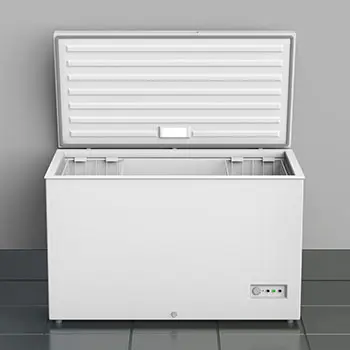
For refrigeration, I maintain a hybrid approach. While my main freezer operates normally, I keep a spare control board and essential electronic components protected in EMP-proof storage.
Related: Amish Powerless Tools For A World Without Power
This strategy saved me thousands in food loss during a recent power surge that fried my neighbor’s appliances. My electric cooking equipment stays protected using a method I developed through extensive testing.
Critical components remain shielded in a custom-built Faraday cabinet until needed, while I maintain non-electric alternatives ready for immediate use.
Farming and Gardening Equipment
Managing a productive homestead requires reliable equipment. So, protect your crucial electronic components while maintaining manual backups for every system.
The electric fence system poses a particular challenge. Protecting the controller unit and keeping spare components in EMP-proof storage provides the best balance of usability and security.
Related: 8 Miniature Farm Animals You Should Raise
I keep mechanical fence tensioners ready as a backup.
For irrigation, I’ve implemented a dual system. While my main electronic controllers handle daily operations, I maintain a gravity-fed backup system that can be activated quickly if needed.
This redundancy has proven invaluable during several power disruptions.
Medical Equipment
Modern medical devices pack impressive built-in electromagnetic shields, yet their support systems often stand naked against EMP threats.
Your protection priority list should focus on these life-supporting essentials:
- Backup glucose monitors and testing supplies
- Electronic blood pressure monitors
- Basic nebulizers and portable oxygen concentrators
- Extra hearing aid batteries and chargers
- Emergency medical reference devices
Don’t just toss these into any old container. I’ve tested various setups, and here’s what works: double-layer protection using a sealed metal container with non-conductive lining, wrapped in aluminum foil shielding.
Related: Medicines Every Homesteader Should Stockpile
Store backup power supplies separately – they’re your lifeline when everything goes dark.
Please, please, please: work with your healthcare providers. They know your specific medical needs and can recommend the best protection strategies for your critical equipment.
Vehicle Electronics
Think your modern car will survive an EMP? Think again!
Modern vehicles depend heavily on electronics, making them vulnerable to EMP threats. Through practical experience and research, I’ve developed two effective protection strategies that have become central to my preparedness plan.
My primary defense includes keeping spare Engine Control Units (ECUs) for essential vehicles, stored in a well-built Faraday enclosure.
Related: DIY EMP-Proof Truck
Though it requires a financial investment, this measure is far less costly than replacing vehicles rendered unusable by an EMP event. It acts as mobility insurance. As a backup solution, I’ve acquired several pre-1980s mechanical vehicles, such as my dependable 1975 diesel truck.
With minimal electronic components, these older vehicles offer excellent resilience once given basic EMP-proofing. Their simplicity isn’t just practical—it’s a strategic asset.
Homesteader’s Guide to Understanding EMPs
There are three main types of EMPs: Solar EMPs, caused by coronal mass ejections; Nuclear High-Altitude EMPs (HEMPs); and Non-Nuclear EMPs.
Each carries unique risks to essential systems like solar arrays, well pumps, and communications equipment.
Testing has revealed that proper shielding makes all the difference. Simple solutions like galvanized steel and multiple layers of aluminum foil can effectively protect vital electronics.
While military-grade protection offers the best defense, even DIY solutions can shield against moderate EMP threats.
Related: 7 Powerless Items You’ll Need After An EMP
While my early efforts focused on protecting everything, experience has taught me to prioritize truly essential systems.
Start with your most critical items – communication gear, power systems, and medical devices. Build your protection systems gradually, testing each component thoroughly.
I check my protection systems quarterly using professional RF testing equipment. This regular maintenance routine has caught several potential failures before they became problems.
Remember: These strategies come from practical experience, but every situation is unique. Adapt these methods to your specific needs and always have non-electronic backups available.
Would you like to share your own EMP-proofing experiences? Drop a comment below – I’m always eager to learn from you.
The First 7 Days After Hurricane Helene Hit My Homestead
How An EMP Will Affect Your State (Video)
What to Eat When the Power Goes Out

